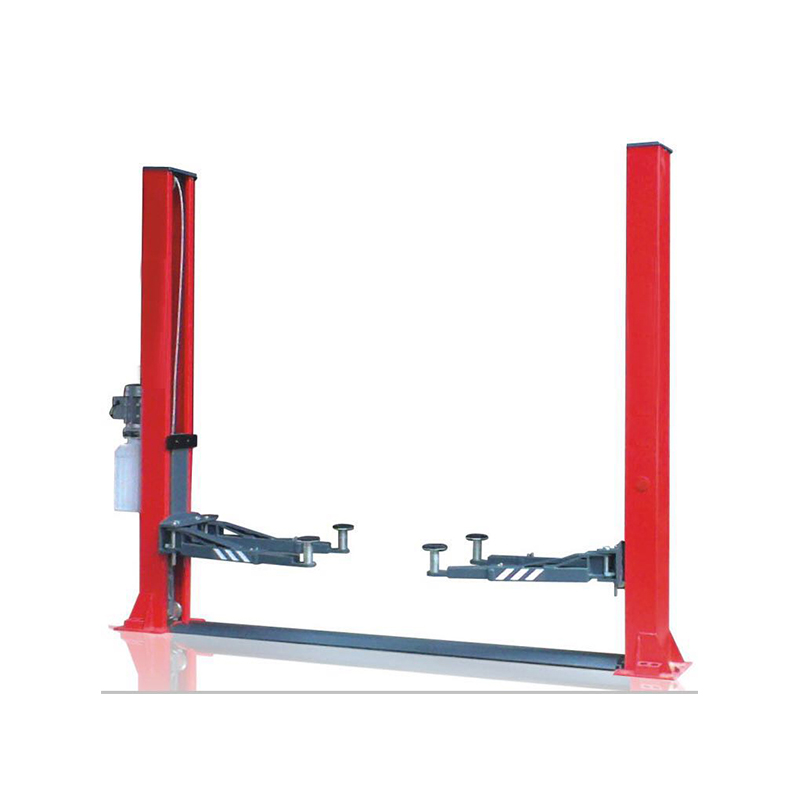Introduction
Two-post lifts are widely used in the automotive repair and maintenance industry. The hydraulic system drives the arm to rise, and the vehicle is lifted steadily to a certain height so that maintenance personnel can inspect, repair and maintain the vehicle from the bottom. When the vehicle needs to be lowered, the hydraulic system is controlled to slowly lower the arm.
Key Factors to Consider When Choosing a Two-Post Lift
The following factors should be considered when choosing a two-post lift:

I. Lifting weight
- Determine the maximum lifting requirement: First, consider the type and maximum weight of the vehicle to be repaired on a daily basis. If you mainly repair small cars, a lift with a lifting weight of about 3-4 tons may be sufficient; but if it involves some SUVs or light trucks, you may need equipment with a larger lifting weight, generally 5 tons or more.
- Consider future business development: If there is a possibility of business expansion, such as the possibility of undertaking the repair of heavier vehicles, you should choose a lift with a certain margin of lifting weight.
II. Lifting height
- Meet the vehicle maintenance height: Different vehicles have different heights. Make sure that the lifting height of the lift can meet the needs of comprehensive inspection and repair of the bottom of the vehicle during daily maintenance. For example, for some taller SUVs or commercial vehicles, the lifting height should be at least 1.8 meters.
- Consider the workspace requirements: In addition to the height of the vehicle itself, you also need to consider the space height required for maintenance personnel to operate under the vehicle.
III. Column spacing
- Adapt to vehicle width: The column spacing should be able to accommodate the width of the vehicle to be repaired on a daily basis. Too narrow may cause the vehicle to be unable to enter the lift, or be unstable during the lifting process; too wide will take up too much space.
- Convenient operation: Reasonable column spacing should facilitate maintenance personnel to operate around the vehicle, and also facilitate the vehicle to enter and exit the lift.
IV. Safety performance
- Stable structure: Check whether the lift’s columns, beams and other structures are strong and stable, and can withstand the weight of the vehicle without tilting or shaking.
- Safety locking device: It should have a reliable safety locking function to prevent the lift from accidentally falling during use, ensuring the safety of personnel and vehicles.
- Overload protection: When the lifting weight exceeds the rated value, it can automatically stop lifting and sound an alarm.
V. Convenience of operation
- Control method: Choose a simple and convenient control method, such as electric button control or remote control.
- Lifting speed: A moderate lifting speed can both improve work efficiency and ensure safety.
Adjustable parts: Such as adjustable support arms, etc., can adapt to the chassis structure of different vehicles.
VI. Brand and after-sales service
- Well-known brands: usually more reliable quality, more mature technology, and more guaranteed after-sales service.
- After-sales service: including installation and commissioning, maintenance, technical support, etc. Good after-sales service can ensure that problems with the lift can be solved in a timely manner during use.
